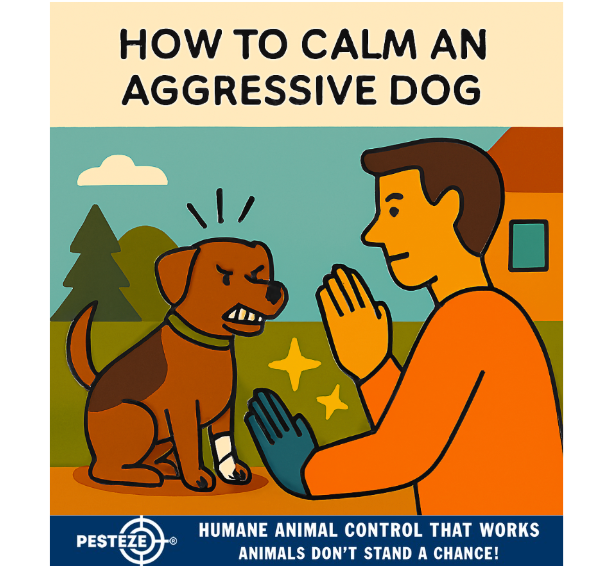HOW TO CALM AN AGGRESSIVE DOG

HOW TO CALM AN AGGRESSIVE DOG
SUMMARY
Aggressive behavior in dogs can be alarming and dangerous if not handled properly. Whether triggered by fear, territorial instincts, or past trauma, aggression is often a sign of deeper emotional or physical distress. This guide offers expert-backed strategies to help calm an aggressive dog safely and effectively. With patience, consistency, and the right tools, you can reduce tension and build trust with your pet.
FEATURES
-
Identify Triggers and Patterns: Observe what situations or stimuli provoke aggressive responses.
-
Stay Calm and Avoid Punishment: Use a composed tone and avoid yelling or physical discipline.
-
Create a Safe Environment: Remove stressors and provide a quiet, secure space for your dog.
-
Use Positive Reinforcement: Reward calm behavior with treats, praise, and gentle interaction.
-
Practice Controlled Socialization: Introduce new people and pets gradually under supervision.
-
Consult a Professional Trainer or Vet: Seek expert help for persistent or severe aggression.
GUIDE DESCRIPTION
Dealing with an aggressive dog requires a thoughtful and informed approach. Aggression can stem from fear, anxiety, pain, or lack of proper socialization. Understanding the root cause is the first step toward creating a safer and more peaceful environment for both your dog and those around them.
Begin by identifying triggers. Does your dog react aggressively to strangers, loud noises, or other animals? Keep a journal of incidents to spot patterns and anticipate future reactions. This insight helps you avoid or manage high-risk situations.
Stay calm during aggressive episodes. Dogs respond to your energy—yelling or physical punishment can escalate the behavior. Instead, use a firm but gentle voice and avoid direct eye contact, which may be perceived as a threat.
Create a safe space where your dog can retreat and decompress. This could be a quiet room, crate, or designated corner with familiar toys and bedding. Reducing environmental stress helps lower aggression levels.
Positive reinforcement is key. Reward calm behavior with treats, affection, and verbal praise. Avoid reinforcing aggression by giving attention during outbursts. Instead, wait for calm moments to engage.
Socialization should be slow and controlled. Introduce new people, pets, and environments gradually. Use leashes, barriers, and supervision to ensure safety and reduce anxiety.
If aggression persists or worsens, consult a veterinarian or certified dog behaviorist. Medical issues like pain or neurological conditions can contribute to aggression, and professional training may be necessary to modify behavior effectively.
With consistency and compassion, even aggressive dogs can learn to feel safe and behave calmly.
- Amy Chang


Comments 0